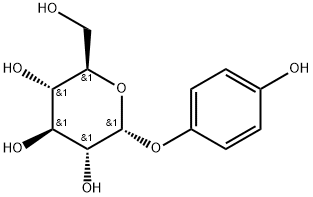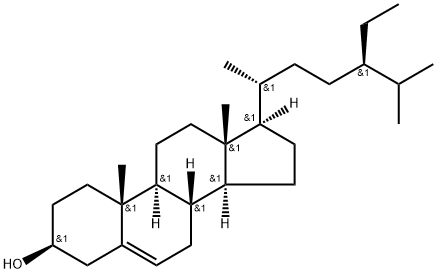alpha-Arbutin
Synonym(s):4-Hydroxyphenyl α-D -glucopyranoside;Hydroquinone O-α-D -glucopyranoside
- CAS NO.:84380-01-8
- Empirical Formula: C12H16O7
- Molecular Weight: 272.25
- MDL number: MFCD09838262
- EINECS: 209-795-0
- SAFETY DATA SHEET (SDS)
- Update Date: 2025-03-04 13:31:24

What is alpha-Arbutin?
Description
Arbutin is naturally found in plant sources such as Bearberry, Cranberry and Mulberry, which essentially prevents the formation of melanin (the pigment that creates skin colour). The chemically synthesised version of this plant extract is known as Alpha Arbutin which is used as a topical skin brightening agent to treat sun spots, pigmentation and scars caused by sun damage and breakouts. It also has antioxidant properties, which protect the skin from potential sun damage. Along with Retinol, it is a fairly common ingredient in anti-ageing products to treat age spots, fine lines and wrinkles. 
Chemical properties
alpha-Arbutin is White Solid
Chemical properties
It is a glycosylated hydroquinone molecule, meaning a sugar molecule that has replaced one of the hydroxyl (-OH) groups on hydroquinone. Hydroquinone is seen as the gold standard of skin lightening, but there are concerns surrounding this well-studied tyrosinase inhibitor, such as skin sensitization, melanocytotoxicity from oxidative byproducts, and exogenous ochronosis (blue-black splotchy pigmentation) as a result of long-term application.1,2 Alpha arbutin is a more tolerable alternative to hydroquinone and is sometimes referred to as “natural hydroquinone.” Alpha arbutin functions similarly to hydroquinone, due to its molecular structure, but with reduced irritation and melanocytotoxicity. Alpha arbutin does not pose a risk in regards to exogenous ochronosis and poses minimal irritation and sensitization risk, making it a more tolerable alternative to hydroquinone.
The Uses of alpha-Arbutin
alpha-Arbutin is a component used in the skin-whitening cosmetics.
The Uses of alpha-Arbutin
more stable analog of b-Arbutin
The Uses of alpha-Arbutin
α-Arbutin may be used as an analytical reference standard for the determination of the analyte in cosmetics by high-performance liquid chromatography with UV detection (HPLC-UV) method.
Definition
Alpha arbutin, also called Hydroquinone β-D-glucopyranoside, is a naturally occurring antioxidant and skin brightener that is naturally found in the bearberry plant. It reduces melanin formation, improving the appearance of age spots, freckles, melasma, and post-inflammatory pigmentation.
Definition
Arbutin is the best as compared to vitamin c because it has fewer side effects and more benefits like reducing dark spots, age spots, ageing, etc. Arbutin gives quicker results than vitamin C. Arbutin acts as hydroquinone, which means it has depigmenting factors. Vitamin C is not easily absorbed into the skin, whereas arbutin absorbs quickly into the skin.
Benefits
Ensures an even skin tone after only one month;Reduces the degree of skin tanning after UV exposure;Helps to minimize the appearance of liver spots.
Biological Functions
Alpha arbutin acts as a tyrosinase competitive inhibitor and also slows melanosome maturation (the organelles that synthesize and store melanin or pigment).3 This is significant because it works on two different mechanisms of pigmentation. Melanin is derived from the amino acid tyrosine and this conversion is regulated by the enzyme tyrosinase. Alpha arbutin is similar in structure to tyrosine, which fits into tyrosinase, needed for melanogenesis. This means that alpha arbutin is reversibly competing with tyrosine for a spot on the enzyme and not inhibiting cell viability, so therefore is not cytotoxic. By targeting tyrosinase, the rate-limiting enzyme in melanin formation, as well as slowing production of the organelles that produce melanin, alpha arbutin is a potent skin brightening agent.
General Description
α-Arbutin is a glycosylated hydroquinone and an anomer of naturally occurring arbutin. It is a potent inhibitor of tyrosinase, a vital enzyme involved in epidermal melanin biosynthesis. α-Arbutin finds extensive application as a powerful skin-lightening agent in cosmetic industries.
Mechanism of action
Alpha arbutin is frequently marketed as a safer alternative to hydroquinone (a popular skin-lightening ingredient that has been banned in Europe and Australia). It has similar results in brightening skin but without the dangerous bleaching process. Instead, it reduces skin’s pigment production by suppressing the enzymes that stimulate melanin. This also slows down the process by which UV light causes pigmentation, so it both prevents and treats pigmentation issues.
Side Effects
Alpha arbutin is an active compound. Using too many active agents together can cause harshness to your skin.
For sensitive skin, using too much product containing alpha arbutin can cause a burning sensation on your face or skin.
Using moisturisers just after applying alpha arbutin cream or gel may not work well on your skin. It is a light compound which does not absorb well into the skin if topped over a moisturiser.
Alpha arbutin side effects occur when applied on cracked skin. It is suitable for topical use but when it comes in contact with an exposed wound, it causes unbearable irritation.
Synthesis

In a 100 ml reaction flask, add (1.21 g, 2.5 mmol)P-acetoxyphenyl-2,3,4,6-tetra-O-acetyl-|?-D-glucopyranoside 6,Add 36 ml of anhydrous methanol to dissolve, magnetically stir, add a catalytic amount of 0.06 g of sodium methoxide, react at 25 ?? C for 2 hours, add acidic resin to neutralize to system pH = 7,The resin was recovered by filtration, and the filtrate was concentrated to dryness under reduced pressure.Beta-arbutinWhite solid 0.65 g,The yield was 96%.
Metabolism
Not Available
Properties of alpha-Arbutin
| Melting point: | 195-196°C |
| Boiling point: | 561.6±50.0 °C(Predicted) |
| Density | 1.556±0.06 g/cm3(Predicted) |
| storage temp. | 2-8°C |
| solubility | DMSO (Slightly), Methanol (Slightly) |
| form | Solid |
| pka | 10.10±0.15(Predicted) |
| color | White to Off-White |
| BRN | 89675 |
| InChI | InChI=1/C12H16O7/c13-5-8-9(15)10(16)11(17)12(19-8)18-7-3-1-6(14)2-4-7/h1-4,8-17H,5H2/t8-,9-,10+,11-,12+/s3 |
| CAS DataBase Reference | 84380-01-8(CAS DataBase Reference) |
Safety information for alpha-Arbutin
| Signal word | Warning |
| Pictogram(s) |
 Exclamation Mark Irritant GHS07 |
| GHS Hazard Statements |
H302:Acute toxicity,oral H315:Skin corrosion/irritation H319:Serious eye damage/eye irritation H335:Specific target organ toxicity, single exposure;Respiratory tract irritation |
| Precautionary Statement Codes |
P261:Avoid breathing dust/fume/gas/mist/vapours/spray. P264:Wash hands thoroughly after handling. P264:Wash skin thouroughly after handling. P270:Do not eat, drink or smoke when using this product. P271:Use only outdoors or in a well-ventilated area. P280:Wear protective gloves/protective clothing/eye protection/face protection. P330:Rinse mouth. P362:Take off contaminated clothing and wash before reuse. P301+P312:IF SWALLOWED: call a POISON CENTER or doctor/physician IF you feel unwell. P302+P352:IF ON SKIN: wash with plenty of soap and water. P304+P340:IF INHALED: Remove victim to fresh air and Keep at rest in a position comfortable for breathing. P305+P351+P338:IF IN EYES: Rinse cautiously with water for several minutes. Remove contact lenses, if present and easy to do. Continuerinsing. P332+P313:IF SKIN irritation occurs: Get medical advice/attention. P337+P313:IF eye irritation persists: Get medical advice/attention. P405:Store locked up. P403+P233:Store in a well-ventilated place. Keep container tightly closed. P501:Dispose of contents/container to..… |
Computed Descriptors for alpha-Arbutin
| InChIKey | BJRNKVDFDLYUGJ-ZIQFBCGOSA-N |
| SMILES | O(C1C=CC(O)=CC=1)[C@@H]1[C@@H]([C@@H](O)[C@H](O)[C@@H](CO)O1)O |&1:8,9,10,12,14,r| |
alpha-Arbutin manufacturer
New Products
3-Iodophenylacetic acid 3-Pyridineacetonitrile, α-hydroxy- 2-Propanamine, 1-chloro-, hydrochloride (9CI) 3-(hexyloxy)-4-(pyridin-3-yl)-1,2,5-thiadiazole 2-Hexyn-1-ol Dibenzo-18-crown-6 Nickel(II) perchlorate hexahydrate, 98% 4-Bromophenylacetonitrile, 95% 3-Bromo-4-fluoroaniline, 97% Sodium tetraborate decahydrate, 98% Palladium(II) acetate, trimer, Pd 99% 4-Bromo-2-chlorotoluene, 97% N N Dimethylformamide Dimethyl Acetal (Dmf Dma) 2,3-Dichloro Benzoyl Cyanide [Side Chain] Bis(2-Chloroethyl) Amine Hydrochloride L-Glutamic Acid Diethyl Ester Hydrochloride 5-(Difluoromethoxy)-2-Mercaptobenzimidazole 1-Ethyl-3-(3-Dimethylaminopropyl)-Carbodiimide Hydrochloride [EDC Hcl] 1,4-Napthoquinone Bromoiodomethane Sodium Bicarbonate Methylene Dichloride (MDC) Ethyl Acetate Indole-3-Carbinol (I3C)Related products of tetrahydrofuran








You may like
-
 alpha-Arbutin >98% (HPLC) CAS 84380-01-8View Details
alpha-Arbutin >98% (HPLC) CAS 84380-01-8View Details
84380-01-8 -
 α-Arbutin CAS 84380-01-8View Details
α-Arbutin CAS 84380-01-8View Details
84380-01-8 -
 Alpha-arbutin 98% CAS 84380-01-8View Details
Alpha-arbutin 98% CAS 84380-01-8View Details
84380-01-8 -
 α-Arbutin CAS 84380-01-8View Details
α-Arbutin CAS 84380-01-8View Details
84380-01-8 -
 17604-74-9 3-Pyridineacetonitrile, α-hydroxy- 98+View Details
17604-74-9 3-Pyridineacetonitrile, α-hydroxy- 98+View Details
17604-74-9 -
 Cyclohexane, (2-propynyloxy)- 67967-07-1 98+View Details
Cyclohexane, (2-propynyloxy)- 67967-07-1 98+View Details
67967-07-1 -
 3-Iodophenylacetic acid 1878-69-9 98+View Details
3-Iodophenylacetic acid 1878-69-9 98+View Details
1878-69-9 -
 132945-75-6 (S)-1-Boc-3-methanesulfonyloxy-pyrrolidine 98+View Details
132945-75-6 (S)-1-Boc-3-methanesulfonyloxy-pyrrolidine 98+View Details
132945-75-6
